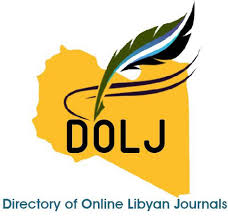From Verbal Abuse to Legal Threats: Analyzing Assaults on Nursing Staff in a Libyan Healthcare Setting: A Case Study from Sorman General Hospital
DOI:
https://doi.org/10.54361/LJMR.19.2.27Keywords:
Nursing Staff Violence, Tribal Tensions, Institutional Leniency, Healthcare Workplace SafetyAbstract
Background. The study aims to identify the causes of violence against nursing staff at Sorman General Hospital, explore the forms of assault faced by the nursing staff, and examine the correlational relationship between the causes of violence and the forms of assault. A descriptive approach was adopted as it suited the study, and a questionnaire was used to collect primary data. Material and Methods The sample included 70 exposed and non-exposed individuals within Sorman General Hospital. The collected data were analyzed using the statistical analysis program SPSS 25. Results revealed a high prevalence of causes of violence, including leniency in enforcing penalties against perpetrators of violence within the hospital, tribal tensions, and the dominance of a culture of violence, lack of awareness, poor communication skills, and the belief that violence is a means to achieve goals. Additionally, a high prevalence of the most prominent forms of assault against nursing staff at Sorman General Hospital was identified, such as verbal abuse and shouting, refusal to cooperate, assault on nurses' personal property (e.g., cars, phones), and threats of legal action or imprisonment due to medical errors. The study also indicated that there is no statistically significant difference in the causes of violence and forms of assault against nursing staff, with a significance level of (α ≥ 0.05). Conclusion: Based on the study's findings, the researchers recommended the necessity of enforcing punitive laws against those who commit such violent behaviors and imposing strict regulations to prevent such potential violations.
Downloads
References
1. International Council of Nurses. Violence: A Worldwide Epidemic. Geneva: ICN; 2022.
2. World Health Organization. Violence Against Health Workers. Geneva: WHO; 2023.
3. Elzagheid M. Healthcare Challenges in Post-Conflict Libya. Libyan J Med. 2022;17(1):1–9.
4. Abuhmaira A, et al. Workplace Violence in Libyan Hospitals: A Qualitative Study. BMC Health Serv Res. 2023;23:45.
5. Al-Qadi MM. Violence Against Nurses in Jordan: Prevalence and Predictors. J Nurs Manag. 2021;29(5):1023–1031.
6. Ahmed M. Tribal Dynamics and Healthcare Conflict in North Africa. Soc Sci Med. 2022;298:114876.
7. Liu J, et al. Underreporting of Workplace Violence in Low-Income Settings. Am J Nurs. 2023;123(4):30–38.
8. Sorman General Hospital. Internal Incident Reports 2020–2023. Unpublished data.
9. Al-Masri H. Staff Retention Crisis in Libyan Hospitals. J Glob Health. 2023;13:010401.
10. WHO Eastern Mediterranean Region. Addressing Violence in Healthcare. Cairo: WHO-EMRO; 2021.
11. WHO. Framework for Preventing Violence Against Health Workers. Geneva: WHO; 2022
12. WHO. Workplace Violence in the Health Sector. Geneva: WHO; 2022.
13. WHO. Framework for Preventing Violence Against Health Workers. Geneva: WHO; 2023.
14. Abuhmaira A, et al. Violence in Libyan Hospitals. BMC Health Serv Res. 2023;23(1):45.
15. Al-Qadi MM. Violence Against Nurses in Jordan. J Nurs Manag. 2023;31(2):112-120.
16. Elzagheid M. Healthcare in Post-Conflict Libya. Libyan J Med. 2022;17(1):1-9.
17. Liu J, et al. Reducing Violence Through Reporting Systems. Am J Nurs. 2023;123(4):30-38.
18. Ahmed M. Tribal Dynamics in Libyan Institutions. Soc Sci Med. 2023;305:115032.
19. WHO-EMRO. Addressing Tribal Conflict in Healthcare. Cairo: WHO-EMRO; 2023.
20. Ahmed M. Retaliatory Violence in Libyan Hospitals. J Interpers Violence. 2023;38(5-6):567-589.
21. Al-Masri H. De-escalation Training in MENA. J Clin Nurs. 2023;32(7-8):e45-e58.
Downloads
Published
Issue
Section
License
Copyright (c) 2025 Abdalrauf A Mahmud Yousif (Author)

This work is licensed under a Creative Commons Attribution-NonCommercial-NoDerivatives 4.0 International License.
Open Access Policy
Libyan journal of medical Research (LJMR).is an open journal, therefore there are no fees required for downloading any publication from the journal website by authors, readers, and institution.
The journal applies the license of CC BY (a Creative Commons Attribution 4.0 International license). This license allows authors to keep ownership f the copyright of their papers. But this license permits any user to download , print out, extract, reuse, archive, and distribute the article, so long as appropriate credit is given to the authors and the source of the work.
The license ensures that the article will be available as widely as possible and that the article can be included in any scientific archive.
Editorial Policy
The publication of an article in a peer reviewed journal is an essential model for Libyan journal of medical Research (LJMR). It is necessary to agree upon standards of expected ethical behavior for all parties involved in the act of publishing: the author, the journal editorial, the peer reviewer and the publisher.
Any manuscript or substantial parts of it, submitted to the journal must not be under consideration by any other journal. In general, the manuscript should not have already been published in any journal or other citable form, although it may have been deposited on a preprint server. Authors are required to ensure that no material submitted as part of a manuscript infringes existing copyrights, or the rights of a third party.
Authorship Policy
The manuscript authorship should be limited to those who have made a significant contribution and intellectual input to the research submitted to the journal, including design, performance, interpretation of the reported study, and writing the manuscript. All those who have made significant contributions should be listed as co-authors.
Others who have participated in certain substantive aspects of the manuscript but without intellectual input should only be recognized in the acknowledgements section of the manuscript. Also, one of the authors should be selected as the corresponding author to communicate with the journal and approve the final version of the manuscript for publication in the LJMR.
Peer-review Policy
- All the manuscripts submitted to LJMR will be subjected to the double-blinded peer-review process;
- The manuscript will be reviewed by two suitable experts in the respective subject area.
- Reports of all the reviewers will be considered while deciding on acceptance/revision or rejection of a manuscript.
- Editor-In-Chief will make the final decision, based on the reviewer’s comments.
- Editor-In-Chief can ask one or more advisory board members for their suggestions upon a manuscript, before making the final decision.
- Associate editor and review editors provide administrative support to maintain the integrity of the peer-review process.
- In case, authors challenge the editor’s negative decision with suitable arguments, the manuscript can be sent to one more reviewer and the final decision will be made based upon his recommendations.














